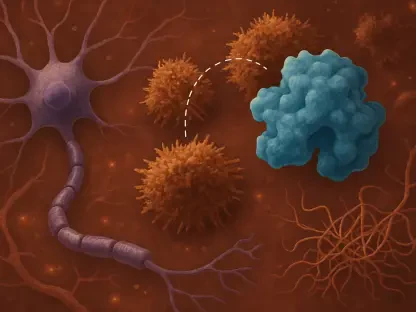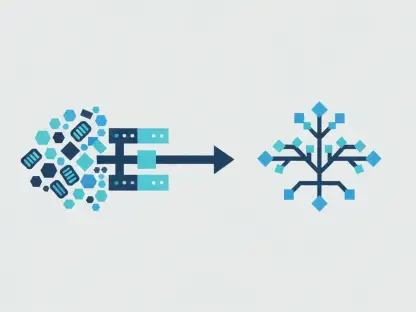Advancements in artificial intelligence (AI) have facilitated significant progress in heart attack diagnosis, specifically through an AI model trained to identify blocked coronary arteries using electrocardiogram (ECG) readings. This groundbreaking technology has been found to outperform human clinicians and match the accuracy of troponin T testing, as presented at the American College of Cardiology’s Annual Scientific Session (ACC.25). The potential for AI to expedite the identification of patients requiring urgent treatment for heart attacks, particularly non-ST segment elevation myocardial infarctions (NSTEMI), is profound.
Breakthroughs in ECG Analysis for Heart Attack Diagnosis
AI Model’s Impact in Emergency Departments
A remarkable advantage of the AI model is its applicability in general emergency department settings, a departure from previous models tailored to high-risk populations. Notably, this innovation is expected to dramatically improve the diagnosis of NSTEMI—the most challenging heart attack type for clinicians due to its subtle ECG variations. Electrocardiogram analysis in emergency departments has traditionally been inconsistent. While ST segment elevation in ECGs serves as a clear indicator of a heart attack, many urgent coronary revascularization cases lack these evident markers, resulting in delays in treatment.
The research aims to streamline this process, enabling the prompt identification of patients who might require revascularization. Dr. Antonius Büscher, MD, the first author of the study and clinician scientist at University Hospital Münster, Germany, holds that this advancement can revolutionize the detection and treatment protocols for type 1 heart attacks, encompassing both STEMI and NSTEMI cases. Type 1 heart attacks involve plaque buildup in the coronary arteries, which ruptures and obstructs blood flow to the heart. Crucially, the extent of heart muscle damage depends on the duration and severity of oxygen deprivation and the immediacy of revascularization treatments.
Targeting Type 1 Heart Attacks
Type 1 heart attacks are particularly aggressive, characterized by a plaque build-up in the coronary arteries, rupturing and obstructing blood flow to the heart muscle. The extent of damage in such cases is heavily reliant on the duration and severity of oxygen deprivation and the timeliness of coronary revascularization treatments. Dr. Büscher explains that by focusing on type 1 heart attacks, including both ST-elevated myocardial infarctions (STEMI) and non-ST segment elevation myocardial infarctions (NSTEMI), the AI model promises to improve patient outcomes by rapidly identifying those who need urgent care.
This approach addresses the variabilities and limitations seen in traditional ECG analysis, offering a significant leap in diagnostic precision, particularly for NSTEMI cases, which often present with subtle ECG changes. Through this technology, emergency department clinicians can make more informed decisions swiftly, thereby potentially reducing the risk of delayed treatment and enhancing the chances of patient recovery. This model represents an evolution in heart attack management, promising to transform the diagnostic landscape with its high accuracy and applicability.
Enhancing Traditional Diagnostic Methods
Limitations of Conventional Heart Attack Tests
Heart attacks have conventionally been diagnosed using ECGs and troponin T blood tests. The swift detection of heart attack signatures through ECG assessment of heart electrical activity patterns is vital; however, troponin T tests, despite their higher sensitivity, can yield positive results even in non-type 1 heart attack conditions. This variance increases diagnostic uncertainty. Given the constant influx of patients presenting with potential heart attack symptoms in emergency departments, an urgent need exists for diagnostic methods that can efficiently identify patients requiring revascularization therapy.
The AI model’s ability to enhance diagnostic accuracy directly addresses these limitations. By analyzing ECG features and integrating this data with sophisticated machine learning algorithms, the AI model offers a more reliable method for differentiating between true heart attacks and other conditions presenting similar symptoms. This is particularly critical for NSTEMI cases, where subtle ECG changes may not trigger immediate action under conventional diagnostics. Therefore, the AI model is positioned to significantly elevate the standard of care in emergency settings.
Development and Testing of the AI Model
To meet this diagnostic need, researchers developed a deep learning model adept at detecting ECG features indicative of urgent revascularization needs. Using data from nearly 145,000 emergency department visits at a single U.S. center, the model was trained and rigorously tested on over 35,000 visits from the same database. Subsequently, external validation involved evaluating data from more than 18,000 visits at a German center. Throughout this validation phase, two primary objectives were maintained: identifying coronary revascularization needs and accurately diagnosing type 1 heart attacks.
Performance metrics from these trials indicated that the AI model excelled, with results showcasing higher diagnostic accuracy compared to traditional methods. Patients were systematically classified into risk categories—low, intermediate, or high—based solely on ECG readings. This classification enabled timely identification of individuals requiring immediate intervention, underlining the model’s potential in enhancing emergency department efficiencies and patient outcomes.
Performance Metrics and Clinical Integration
Superior Accuracy of the AI Model
The AI model’s performance metrics unequivocally demonstrated its superiority. Employing the area under the receiver operating characteristic curve (AUC)—where a value of one signifies perfect discrimination and 0.5 denotes no discrimination—the AI model achieved an AUC of 0.91 in the internal test cohort. This significantly outperformed clinician interpretations, which scored an AUC of 0.65, and traditional troponin testing, which registered at 0.71. In external validation, the model maintained impressive AUCs of 0.85 for detecting type 1 heart attacks and 0.81 for predicting revascularization, delivering higher overall diagnostic accuracy than clinicians (0.74 and 0.70) and matching the precision of high-sensitivity troponin T tests (0.87).
Such robust performance underscores the potent capabilities of AI models in medical diagnostics. This advancement provides a substantial margin of improvement over existing diagnostic practices, promoting faster and more reliable detection of heart attack cases, particularly those requiring immediate revascularization. The model’s ability to discern critical details from ECG readings underscores its transformative potential in emergency healthcare settings.
Enhancing Emergency ECG Interpretation
Dr. Büscher emphasized that the AI model is designed to complement, rather than replace, existing diagnostic protocols. By enhancing ECG interpretation within emergency settings, this model reduces diagnostic uncertainty and augments clinical decision-making. Its ability to swiftly and accurately identify heart attack cases potentially undiagnosed for hours positions the model as an invaluable tool in initiating further necessary tests like high-sensitivity troponin testing, to confirm heart attacks.
Beyond diagnostic accuracy, the AI model also offers advantages in workflow efficiency. Clinicians benefit from immediate insights derived from ECGs, allowing them to prioritize high-risk patients and manage resources more effectively. This integration, coupled with the model’s self-explanatory nature, enables a cohesive and supportive environment for medical professionals, boosting overall patient care and outcomes.
Future Outlook and Adaptability
Self-Explainability and Clinical Integration
One of the most compelling attributes of the AI model is its self-explainability. By allowing researchers to pinpoint and correlate the model’s decision-making features with clinically established markers, the integration of AI into medical decision support systems is significantly enhanced. Dr. Büscher points out that AI models afford physicians the capacity to complement their clinical judgment, discerning subtle yet critical data patterns that might be overlooked by the human eye.
The profound utility of such models goes beyond immediate diagnostics—it extends into broader clinical applications. With AI’s ability to accurately interpret complex ECG data, these tools represent the frontier of medical diagnostics, promising greater precision and enhanced patient outcomes. Furthermore, models like these are poised to become routine in clinical settings, aiding physicians in delivering timely and accurate care.
Potential as Routine Diagnostic Tools
While the domain of AI-driven diagnostics is still developing, Dr. Büscher envisions that these models will eventually become staple tools in medical practice. Despite anticipated performance declines when applied to populations distinct from those they were trained on, this particular model is designed to be applicable across most developed countries. Its availability to researchers and hospitals for fine-tuning with local data ensures that accuracy can be optimized for specific populations.
Such adaptability is pivotal in ensuring the broad and effective implementation of AI diagnostic models. As institutions and healthcare providers gain access to these tools, tailored applications can be developed, enhancing diagnostic precision and patient care outcomes in diverse medical environments. This flexibility underscores the transformative potential of AI in healthcare, promising significant advancements in diagnostics and treatment protocols.
Ongoing Research and Prospective Study
Recent advancements in artificial intelligence (AI) have led to remarkable progress in the diagnosis of heart attacks. One significant development involves an AI model trained to detect blocked coronary arteries by analyzing electrocardiogram (ECG) readings. This innovative technology has demonstrated superiority over human clinicians in diagnostic accuracy and has been found to be as precise as troponin T testing. The findings were showcased at the American College of Cardiology’s Annual Scientific Session (ACC.25).
The implications of this AI technology are substantial, particularly for improving the speed and accuracy of identifying patients who need urgent treatment for heart attacks, with a specific focus on non-ST segment elevation myocardial infarctions (NSTEMI). These types of heart attacks often present diagnostic challenges, making timely and accurate detection crucial for effective treatment.
By leveraging the power of AI, healthcare providers can potentially reduce the time to diagnosis, leading to faster intervention and improved patient outcomes. This technology stands at the forefront of medical innovation, promising to revolutionize how heart attacks are diagnosed and treated, ensuring patients receive the care they need more promptly and accurately. The integration of AI in clinical settings represents a significant stride towards enhancing heart attack management and patient care overall.









